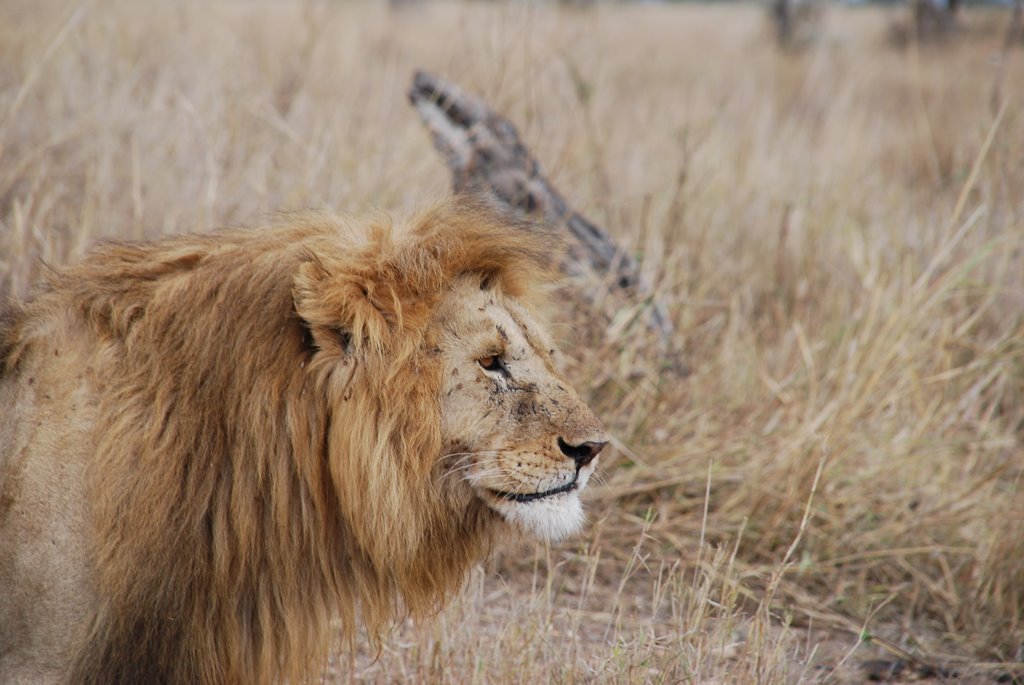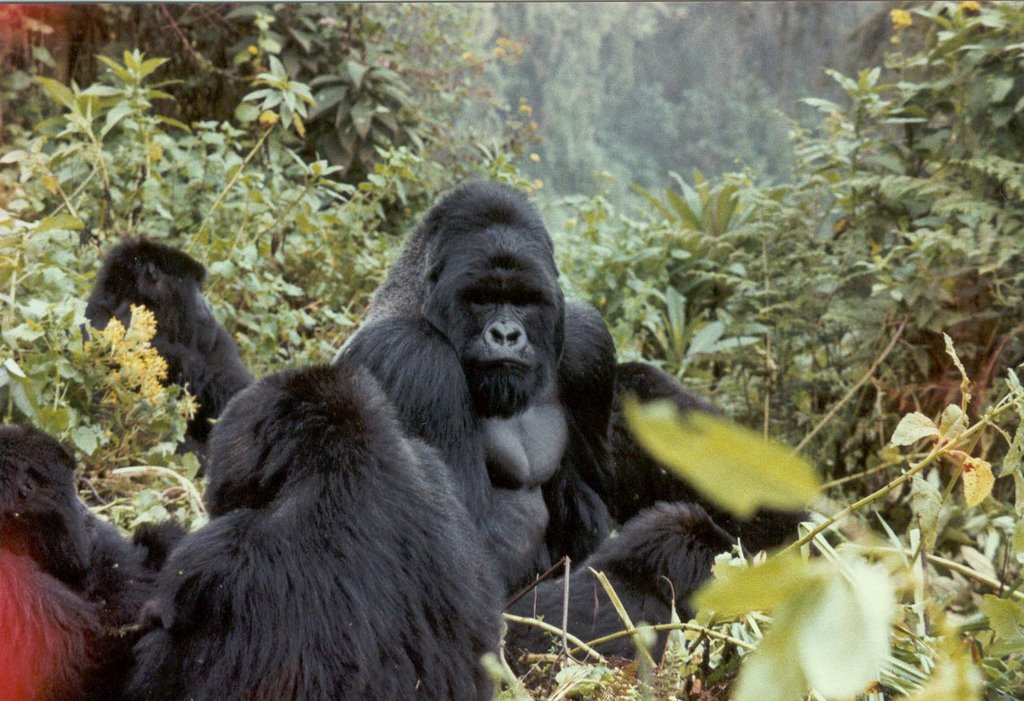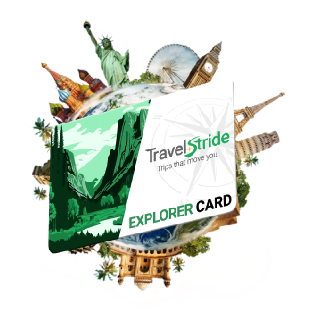African safaris are usually never-to-be-forgotten experiences. Here are Stride's top 5 picks for safaris that are virtually guaranteed to become cherished memories:

1. Viewing the Great Migration in the Serengeti
The Serengeti, which stretches from Tanzania north into southern Kenya, is home to the highest concentration of large mammals in East Africa and beyond. Serengeti National Park, about 5,700 square miles of pristine wilderness in Tanzania, is the jewel in the crown of that country’s park system. And the Serengeti, which also extends into Kenya’s Masai Mara National Reserve, is the scene of one of the greatest wildlife spectacles on earth: the Great Migration, the annual movement of wildebeest and zebras and the animals that prey on them.
More than a million wildebeest and some 200,000 zebras thunder across the Serengeti plains and rivers each July to September, driven by an ancient calendar of sex, birth, life and death. Nothing can stop them, not the hungry hyenas and big cats lying in wait, nor the crocodile-infested waters positioned to block their paths. Nature calls, and the animals answer, often much to their peril.
Movable safari camps
This migration and the ensuing spectacle of predator versus prey have made the Serengeti ideal for mobile tented camps that can move with these herds. Ranging from no frills to luxurious, these camps offer the best chance to see the wildebeest crossing the Grumeti and Mara Rivers. But permanent tented camps, exclusive lodges and larger, comfortable hotels are also available for safari-goers.

2. Loving the Lions in Ngorongoro Crater
Known as “Africa’s Eden,” Ngorongoro Crater is the largest unbroken, inactive volcanic caldera on earth. But safari-goers come for the wildlife. The crater’s walls rise steeply to form a unique residence on the crater floor for 25,000 large animals, 90% of whom never leave this unique natural ecosystem.
In a single day, in a single place, it’s possible to view lions, leopards, elephants, rhinos, buffalo (Africa’s Big Five), gnus, zebras, hippos and scores of other frontline attractions.
Lions and Masai
Luxury lodges and camps with extraordinary views line the rim, and the descent through misty forests into the crater is particularly rewarding for lovers of lions – though the crater harbors just 60 or so, it represents the densest population of lions in the world. Masai tribesmen, clothed in red, are allowed to graze cattle and sheep on the crater floor during daylight hours. You’ll see their distinctive villages with the round huts as you drive in and out of the crater.
High season begins in January and runs through September, but it is interrupted by long periods in March-May when the rainy season makes the rutted roads even more frightful – but still worth the haul.

3. Spotting the Big Five in Kruger National Park, South Africa
For wildlife spotting, including the Big Five (lions, leopards, rhinos, elephants and Cape buffalo) Kruger National Park -- one of Africa’s oldest and largest game parks -- is one of the top destinations in all of Africa. Both black and white rhinos as well as giraffes, cheetahs, hippos, and wildebeest roam the park, which is said to have more species of large mammals – almost 150 -- than any other African reserve.
Range of lodgings
Accommodations in the park range from a variety of safari lodges to inexpensive campsites. The ideal time to go is during the winter dry season, roughly June to October, when animals come to drink at watering holes in the mornings and evenings, and tours typically include both morning and evening game drives and bush walks.
There are also private game reserves near Kruger such as Kwa Madwala, where you can go horseback riding while gawking at zebras, giraffes, and other big game. Frequently, tour operators add on scenic drives outside the park along the waterfall-and-mountain laden Panorama Route as well as deep Blyde River Canyon, one of the largest canyons on earth.

4. Tracking gorillas in Uganda, Rwanda or the Democratic Republic of Congo
The countries of Uganda, Rwanda and the eastern borderlands of the Democratic Republic of Congo are best known for safaris tracking primates – most notably gorillas and chimpanzees – in the wild. In Uganda, the main park for finding gorillas is the Bwindi Impenetrable Forest, a high-altitude rainforest said to harbor more than half – about 300 – of the world’s remaining mountain gorillas.
Bwindi is also home to a number of species of monkeys, as well as vibrant bird life. Kibale National Park, meanwhile, is known for its chimpanzees, the primate species most closely related to humans. A number of lodgings are available in or near both parks.
Rwanda and Congo
In Rwanda, the place to track mountain gorillas is the Virunga Mountains region in the north of the country, while chimpanzees are found in the southern Nyungwe area.
The Democratic Republic of Congo (formerly Zaire), newly welcoming tourists after years of civil strife, has reopened its ecologically diverse Virunga National Park, bordering Rwanda, home to some 200 critically endangered mountain gorillas and a small number of eastern lowland gorillas.Besides mountains, the park contains savannahs, swamps, forests, and volcanoes. A lodge is available at park headquarters and a luxury tent campsite will open soon.
Rhinos, too
Treks to find gorillas may take from 30 minutes to several hours per day; currently there are a half-dozen tour operators, essential to arrange the complicated transport to the park, obtaining permits, and tending to other details. Other DRC parks are Kahuzi-Biega National Park, which harbors one of the last groups of lowland gorillas, and the Garamba National Park, which shelters one of the last known wild populations of northern white rhinos.

5. Wintering with Wildlife in Botswana’s Okavango Delta
Each winter in Botswana, primarily June through August, the Okavango River-- swollen from the preceding rainy season -- floods Botswana’s Okavango Delta, adding greatly to its normal size. The flood waters attract animals from both near and far, who gather in vast numbers – in the hundreds of thousands -- to drink at this huge seasonal watering hole in the otherwise dry winter months.
The animals, in turn, have been drawing an increasing number of safari-goers, who come to see the wide variety of wildlife flocking to the flooded delta. Animals you are likely to see include Cape buffalo, hippos, elephants, giraffes, wildebeest, lions, leopards, cheetahs, zebras, crocodiles, hyenas, antelopes, warthogs, baboons and both black and white rhinos.
Rich bird life is a bonus: the delta harbors hundreds of species. Accommodations range from luxury lodges to campsites and tented camps, and there are a wide variety of tour operators. The Okavango Delta was recently named the 1,000th UNESCO World Heritage Site.











